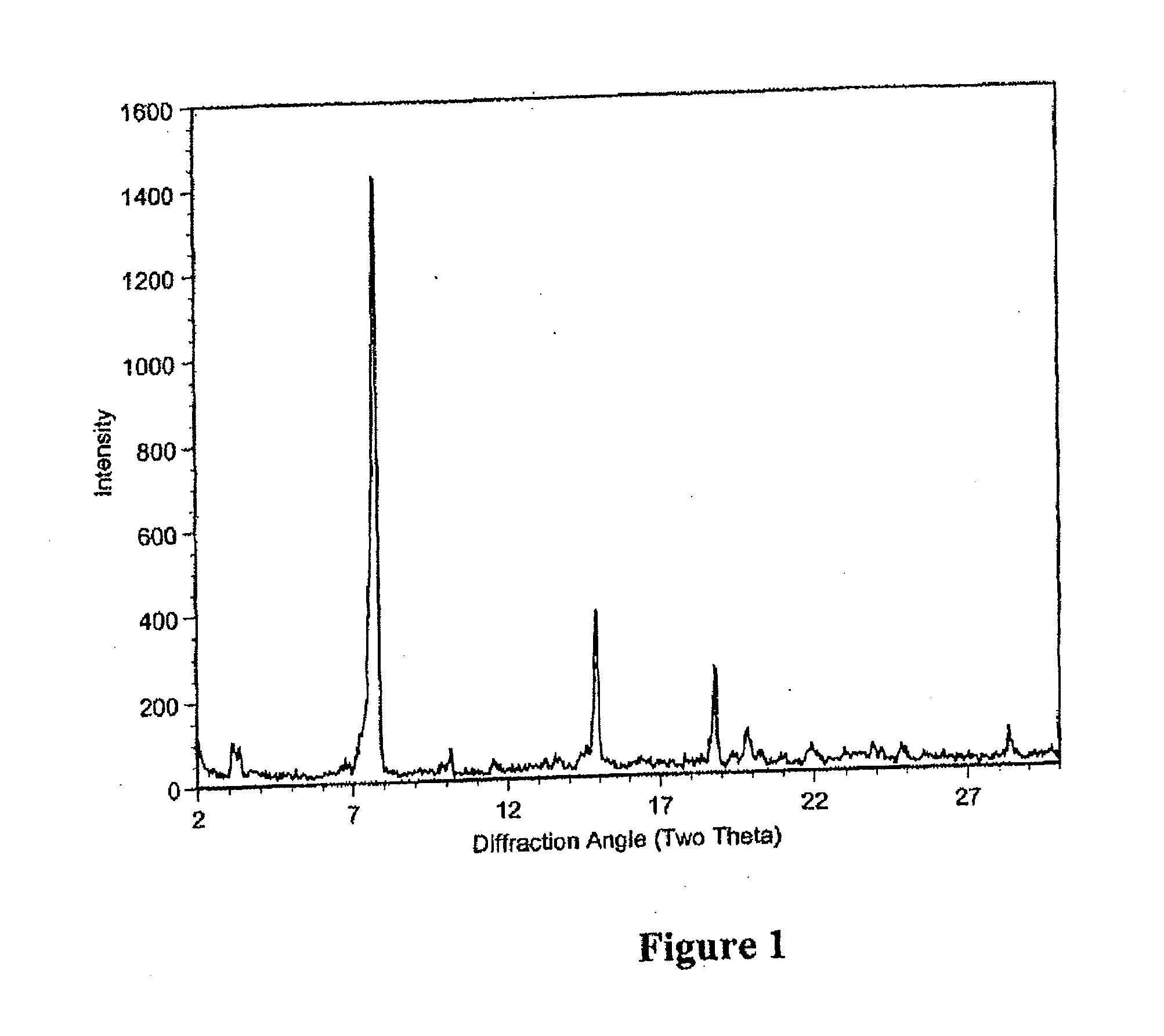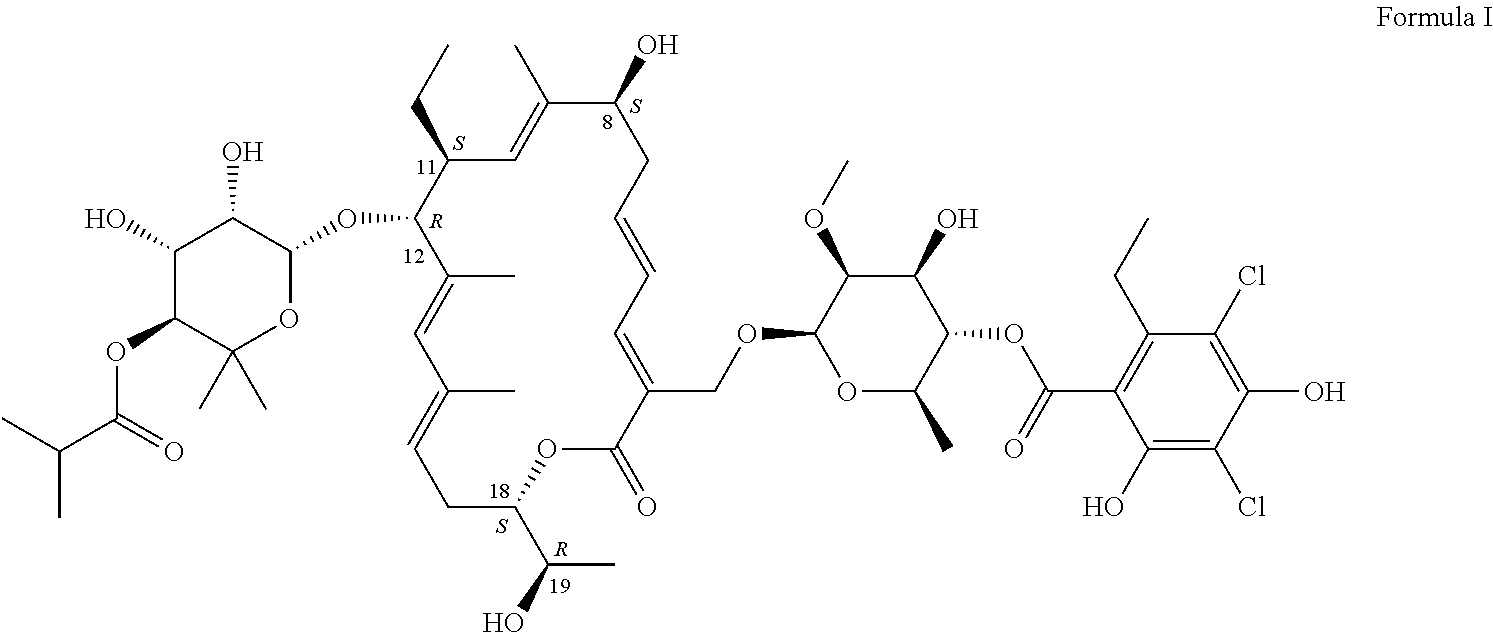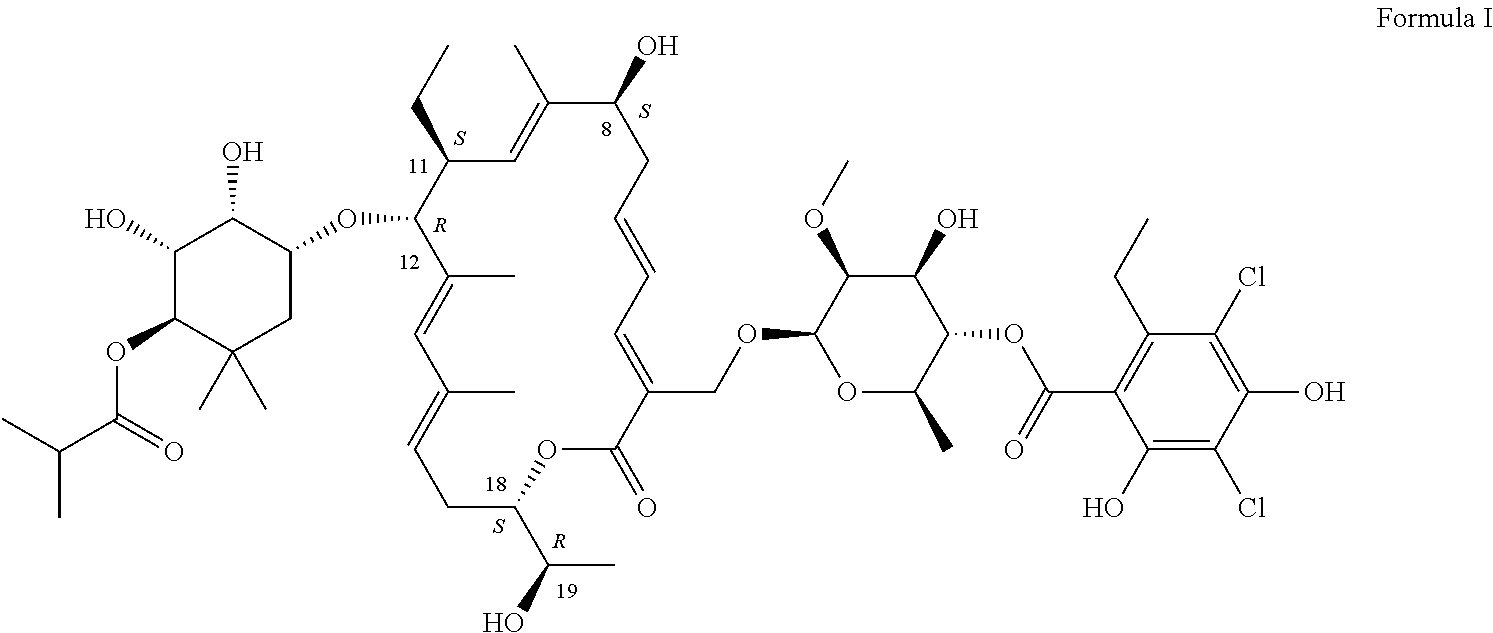Prevention of Clostridium Difficile Infection in High Risk Patients
a technology for clostridium difficile and high-risk patients, which is applied in the field of preventing clostridium difficile infection in high-risk patients, can solve the problems of high risk of cdi in hsct recipients using current conditioning and prophylactic measures, increased risk of cdi, so as to achieve the effect of preventing clostridium infection
- Summary
- Abstract
- Description
- Claims
- Application Information
AI Technical Summary
Benefits of technology
Problems solved by technology
Method used
Image
Examples
example 1
Production of Compound of Formula I
[0056]The compound of Formula I can be produced by fermentation. Cultivation with a mutant form derived from Dactylosporangium aurantiacum subspecies hamdenensis AB 718C-41 NRRL 18085 for the production was carried out in a medium containing carbon sources, inorganic salts and other organic ingredients with one or more absorbents under proper aeration conditions and mixing in a sterile environment. The production method is disclosed in U.S. Pat. No. 7,507,564.
[0057]The nutrient medium comprises from about 0.5 to about 15% of the adsorbent by weight. In one embodiment, the absorbent is an adsorbent substance, such as a resin. Examples of absorbent substances include but are not limited to SP285, Amberlite®, XAD 16, XAD 16HP, XAD2, XAD7HP, XADI 180, XAD 1600, IRC50, or Duolite® XAD761. The nutrient medium can comprise the following combination based on weight: from about 0.2% to about 10% of glucose, from about 0.02% to about 0.5% of K2HPO4, from abo...
example 2
Purification of Compound of Formula I
[0059]After the fermentation in Example 1, the crude material was purified by HPLC. The collected fractions containing about 90-99% of compound of Formula I were combined. The solid was crystallized to the desired crystalline form to produce the pharmaceutical composition (fidaxomicin) using methanol and water solvent system as set forth in U.S. Pat. No. 7,863,249. HPLC analysis showed fidaxomicin to contain about >93% of compound of Formula I as a major component and a mixture of tiacumicins as the minor component.
example 3
[0060]A multi-center study utilizes a randomized, double-blind design to compare the safety and efficacy of fidaxomicin as Clostridium difficile-associated diarrhea or CDI prophylaxis in individuals undergoing hematopoietic stem cell transplant or HSCT. Subjects are randomized to one of two treatment groups in a 1:1 ratio (1 active:1 placebo) and receive fidaxomicin 200 mg or placebo administered orally once daily from the initiation of a standard of care medication (fluoroquinolone prophylaxis) prior to transplantation until 7 days after completion of such a treatment administration.
[0061]Blinded study drug treatment is initiated with prophylactic fluoroquinolones according to standard of care practices. During the study, patients are managed and followed per institutional guidelines for the management of HSCT patients as documented in the institutional guidelines. Patients receive appropriate treatment for their underlying diseases, as well as any complications resul...
PUM
| Property | Measurement | Unit |
|---|---|---|
| diffraction angles 2θ | aaaaa | aaaaa |
| diffraction angles 2θ | aaaaa | aaaaa |
| diffraction angles 2θ | aaaaa | aaaaa |
Abstract
Description
Claims
Application Information
 Login to View More
Login to View More - R&D
- Intellectual Property
- Life Sciences
- Materials
- Tech Scout
- Unparalleled Data Quality
- Higher Quality Content
- 60% Fewer Hallucinations
Browse by: Latest US Patents, China's latest patents, Technical Efficacy Thesaurus, Application Domain, Technology Topic, Popular Technical Reports.
© 2025 PatSnap. All rights reserved.Legal|Privacy policy|Modern Slavery Act Transparency Statement|Sitemap|About US| Contact US: help@patsnap.com



